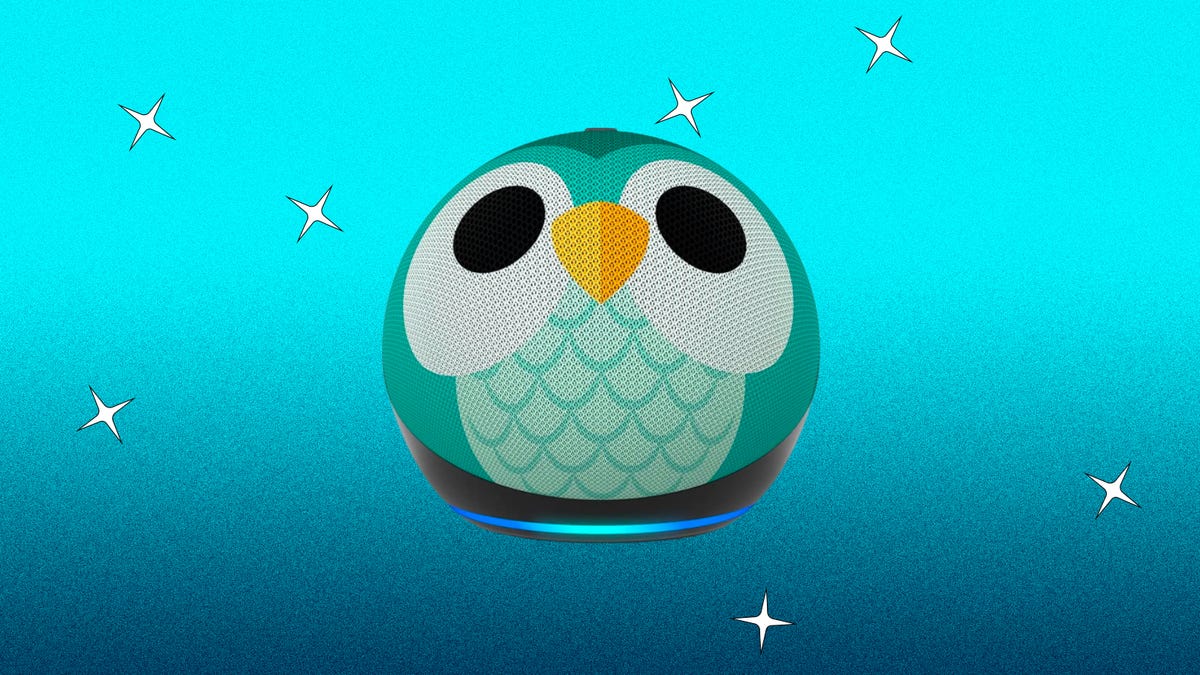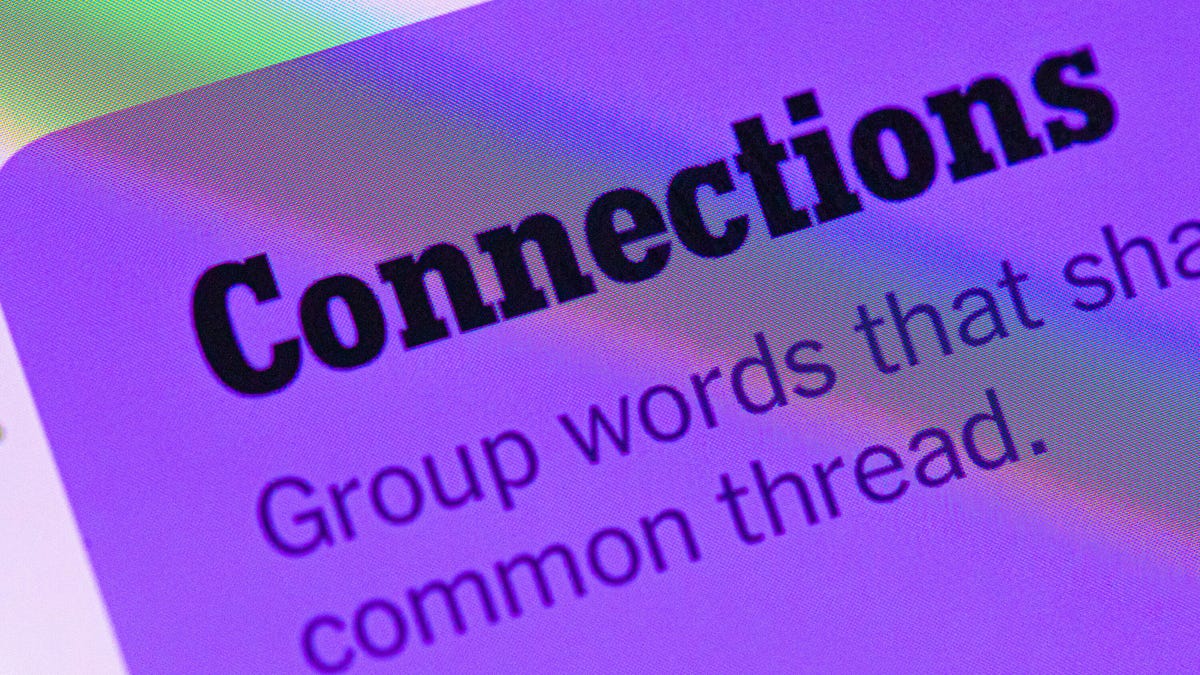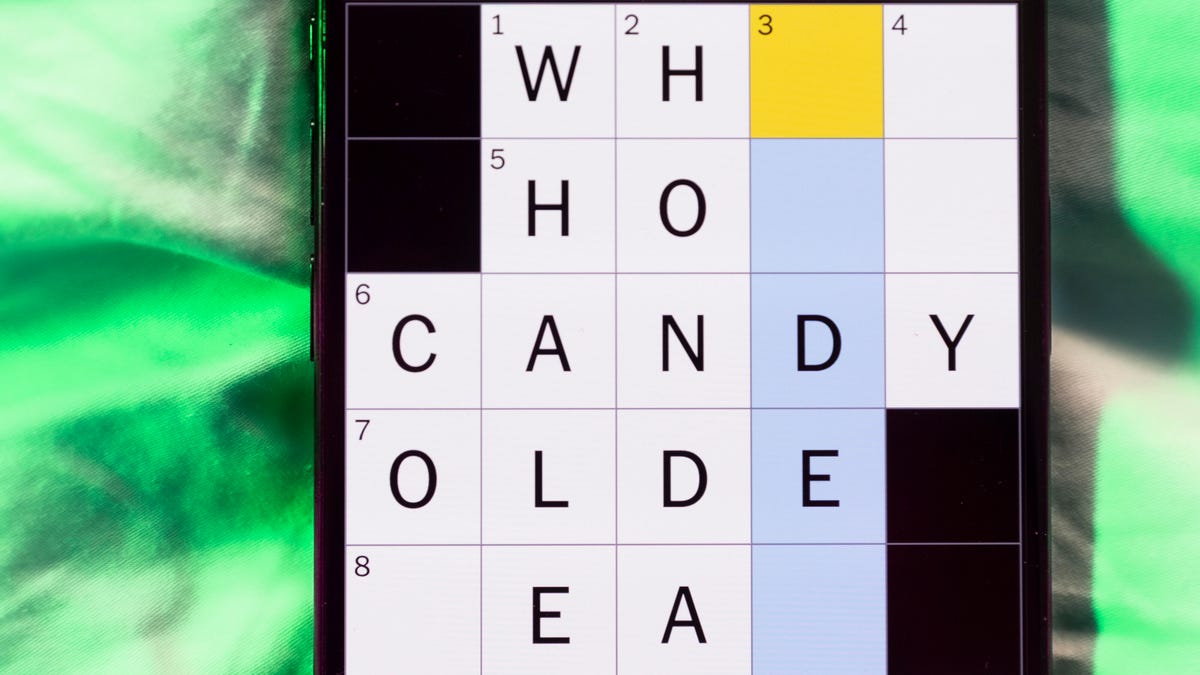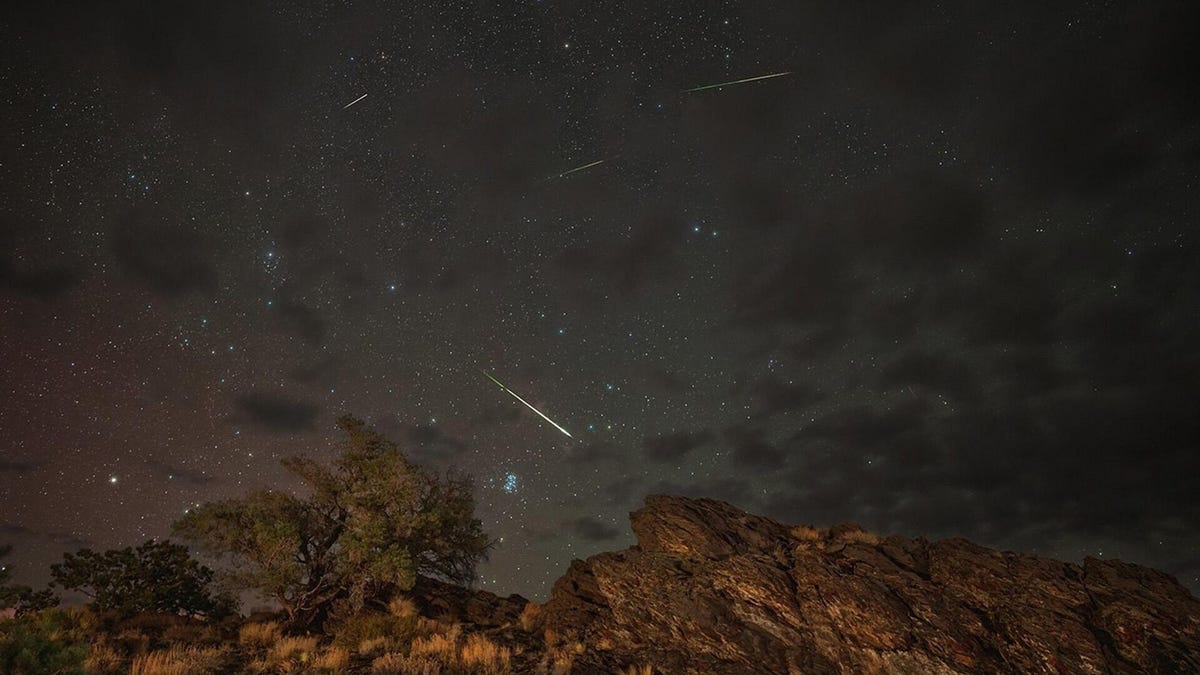Technologies
Amazon to Pay $30M for Ring and Alexa Privacy Violations: Tips for Protecting Your Smart Home Data
As Amazon settles over alleged privacy violations, here’s how you can help keep your personal data safe.

Amazon will pay two separate penalties for privacy violations, the Federal Trade Commission has announced: $25 million for allegedly not deleting children’s data and $5.8 million for failing to restrict employee and contractor access to Ring security videos.
Amazon prevented parents from deleting their children’s voice and geolocation data acquired through the Alexa voice assistant, and stored and used the data for several years to improve the Alexa algorithm to better understand children’s speech patterns and accents, the FTC alleged Wednesday.
This put the data «at risk of harm from unnecessary access,» according to the FTC.
The Children’s Online Privacy Protection Act Rule «does not allow companies to keep children’s data forever for any reason, and certainly not to train their algorithms,» said Samuel Levine, director of the FTC’s Bureau of Consumer Protection, in a statement.
Amazon said in a blog post that it disagrees with the FTC’s claims and denies violating the law.
«We take our responsibilities to our customers and their families very seriously,» Amazon said. «We work hard to protect children’s privacy, and we have built robust privacy protections into our children’s products and services.»
Read more: These 6 Tips Will Help Keep Your Personal Data Private
The FTC on Wednesday also leveled a $5.8 million penalty against Amazon’s Ring. Ring, which was acquired by Amazon in 2018, sells video doorbells, indoor and outdoor cameras and home security services. It has long been criticized for its privacy practices, including sharing doorbell footage with police departments across the US. The settlement announced Wednesday related to allegedly failing to restrict access to customers’ videos across its employees and contractors, and using those videos to train its algorithms without consent.
«One employee over several months viewed thousands of video recordings belonging to female users of Ring cameras that surveilled intimate spaces in their homes such as their bathrooms or bedrooms. The employee wasn’t stopped until another employee discovered the misconduct,» the FTC alleges.
Ring’s failure to «implement basic measures to monitor and detect employees’ video access» meant the company also didn’t know who or how many employees accessed private videos inappropriately.
Read more: Home Security Cheat Sheet: Our Best Tips for Keeping Your Home Safe
Ring didn’t seek customer consent for human review of their videos until January 2018, the FTC alleged.
Ring’s lack of security, including not offering multifactor authentication until 2019, meant hackers exploited account vulnerabilities to compromise 55,000 customers’ accounts in the US, the complaint says. Of those 55,000 customers, 910 accounts across 1,250 devices saw the hacker take «additional invasive actions, such as accessing a stored video, accessing a live stream video or viewing a customer’s profile,» the complaint details. In 20 instances, the hackers maintained access to customer devices for over a month.
«In many instances, the bad actors were not just passively viewing customers’ sensitive video data. Rather, the bad actors took advantage of the camera’s two-way communication functionality to harass, threaten, and insult individuals — including elderly individuals and children — whose rooms were monitored by Ring cameras, and to set off alarms and change important device settings,» the FTC’s complaint says.
The $5.8 million penalty will be used to refund customers, and Ring is required to delete data and videos if obtained prior to 2018 and «delete any work products it derived from these videos.»
Ring’s statement likewise disagreed with the FTC’s claims. «We want our customers to know that the FTC complaint draws on matters that Ring promptly addressed on its own, well before the FTC began its inquiry; mischaracterizes our security practices; and ignores the many protections we have in place for our customers,» Ring said.
How to protect your private data
Bad actors are a threat to your security, and there are a number of steps you can take to help yourself. Here’s how to make sure your home Wi-Fi is secure, how to protect your home security against hacks and the best home security systems of 2023 — including the best cheap home security systems and the best DIY home security systems. You could also look at getting a password manager so your accounts are safer, and here’s CNET’s smart home privacy guide on how to delete your voice recordings across Amazon, Apple and Google.
As companies are keeping more and more of your personal data, here are CNET’s tips on how to keep Facebook from tracking you, how to prevent yourself from being tracked via your Apple AirTags and how to get Google to remove your personal data from search results.
Technologies
Today’s NYT Connections Hints, Answers and Help for Dec. 24, #927
Here are some hints and the answers for the NYT Connections puzzle for Dec. 24 #927

Looking for the most recent Connections answers? Click here for today’s Connections hints, as well as our daily answers and hints for The New York Times Mini Crossword, Wordle, Connections: Sports Edition and Strands puzzles.
Today’s NYT Connections puzzle is kind of tough. Ooh, that purple category! Once again, you’ll need to look inside words for hidden words. Read on for clues and today’s Connections answers.
The Times has a Connections Bot, like the one for Wordle. Go there after you play to receive a numeric score and to have the program analyze your answers. Players who are registered with the Times Games section can now nerd out by following their progress, including the number of puzzles completed, win rate, number of times they nabbed a perfect score and their win streak.
Read more: Hints, Tips and Strategies to Help You Win at NYT Connections Every Time
Hints for today’s Connections groups
Here are four hints for the groupings in today’s Connections puzzle, ranked from the easiest yellow group to the tough (and sometimes bizarre) purple group.
Yellow group hint: Cash out.
Green group hint: Chomp
Blue group hint: Walleye and salmon.
Purple group hint: Make a musical sound, with a twist.
Answers for today’s Connections groups
Yellow group: Slang for money.
Green group: Masticate.
Blue group: Fish.
Purple group: Ways to vocalize musically plus a letter.
Read more: Wordle Cheat Sheet: Here Are the Most Popular Letters Used in English Words
What are today’s Connections answers?
The yellow words in today’s Connections
The theme is slang for money. The four answers are bacon, bread, cheese and paper.
The green words in today’s Connections
The theme is masticate. The four answers are bite, champ, chew and munch.
The blue words in today’s Connections
The theme is fish. The four answers are char, pollock, sole and tang.
The purple words in today’s Connections
The theme is ways to vocalize musically plus a letter. The four answers are hump (hum), rapt (rap), singe (sing) and whistler (whistle).
Don’t miss any of our unbiased tech content and lab-based reviews. Add CNET as a preferred Google source.
Toughest Connections puzzles
We’ve made a note of some of the toughest Connections puzzles so far. Maybe they’ll help you see patterns in future puzzles.
#5: Included «things you can set,» such as mood, record, table and volleyball.
#4: Included «one in a dozen,» such as egg, juror, month and rose.
#3: Included «streets on screen,» such as Elm, Fear, Jump and Sesame.
#2: Included «power ___» such as nap, plant, Ranger and trip.
#1: Included «things that can run,» such as candidate, faucet, mascara and nose.
Technologies
Today’s NYT Mini Crossword Answers for Wednesday, Dec. 24
Here are the answers for The New York Times Mini Crossword for Dec. 24.

Looking for the most recent Mini Crossword answer? Click here for today’s Mini Crossword hints, as well as our daily answers and hints for The New York Times Wordle, Strands, Connections and Connections: Sports Edition puzzles.
Need some help with today’s Mini Crossword? I’m Irish-American, but yet 6-Down, which involves Ireland, stumped me at first. Read on for all the answers.. And if you could use some hints and guidance for daily solving, check out our Mini Crossword tips.
If you’re looking for today’s Wordle, Connections, Connections: Sports Edition and Strands answers, you can visit CNET’s NYT puzzle hints page.
Read more: Tips and Tricks for Solving The New York Times Mini Crossword
Let’s get to those Mini Crossword clues and answers.
Mini across clues and answers
1A clue: Wordle or Boggle
Answer: GAME
5A clue: Big Newton
Answer: ISAAC
7A clue: Specialized vocabulary
Answer: LINGO
8A clue: «See you in a bit!»
Answer: LATER
9A clue: Tone of many internet comments
Answer: SNARK
Mini down clues and answers
1D clue: Sharks use them to breathe
Answer: GILLS
2D clue: From Singapore or South Korea, say
Answer: ASIAN
3D clue: Large ocean ray
Answer: MANTA
4D clue: ___ beaver
Answer: EAGER
6D clue: Second-largest city in the Republic of Ireland, after Dublin
Answer: CORK
Don’t miss any of our unbiased tech content and lab-based reviews. Add CNET as a preferred Google source.
Technologies
Quadrantids Is a Short but Sweet Meteor Shower Just After New Year’s. How to See It
This meteor shower has one of the most active peaks, but it doesn’t last for very long.

The Quadrantids has the potential to be one of the most active meteor showers of the year, and skygazers won’t have long to wait to see it. The annual shower is predicted to reach maximum intensity on Jan. 3. And with a display that can rival Perseids, Quadrantids could be worth braving the cold to see it.
Don’t miss any of our unbiased tech content and lab-based reviews. Add CNET as a preferred Google source.
The show officially begins on Dec. 28 and lasts until Jan. 12, according to the American Meteor Society. Quadrantids is scheduled to peak on Jan. 2-3, when it may produce upwards of 125 meteors per hour. This matches Perseids and other larger meteor showers on a per-hour rate, but Quadrantids also has one of the shortest peaks at just 6 hours, so it rarely produces as many meteors overall as the other big ones.
The meteor shower comes to Earth courtesy of the 2003 EH1 asteroid, which is notable because most meteor showers are fed from comets, not asteroids. Per NASA, 2003 EH1 is a near-Earth asteroid that orbits the sun once every five and a half years. Science posits that 2003 EH1 was a comet in a past life, but too many trips around the sun stripped it of its ice, leaving only its rocky core. The Earth runs through EH1’s orbital debris every January, which results in the Quadrantids meteor shower.
How and where to see Quadrantids
Quadrantids is named for the constellation where its meteors appear to originate, a point known as the radiant. This presents another oddity, as the shower originates from the constellation Quadrans Muralis. This constellation ceased to be recognized as an official constellation in the 1920s and isn’t available on most publicly accessible sky maps.
For the modern skygazer, you’ll instead need to find the Bootes and Draco constellations, both of which contain stars that were once a part of the Quadrans Muralis. Draco will be easier to find after sunset on the evening of Jan. 2, and will be just above the horizon in the northern sky. Bootes orbits around Draco, but will remain under the horizon until just after 1 a.m. local time in the northeastern sky. From that point forward, both will sit in the northeastern part of the sky until sunrise. You’ll want to point your chair in that direction and stay there to see meteors.
As the American Meteor Society notes, Quadrantids has a short but active peak, lasting around 6 hours. The peak is expected to start around 4 p.m. ET and last well into the evening. NASA predicts the meteor shower to start one day later on Jan. 3-4, so if you don’t see any on the evening of Jan. 2, try again on Jan. 3.
To get the best results, the standard space viewing tips apply. You’ll want to get as far away from the city and suburbs as possible to reduce light pollution. Since it’ll be so cold outside, dress warmly and abstain from alcoholic beverages, as they can affect your body temperature. You won’t need any binoculars or telescopes, and the reduced field of view may actually impact your ability to see meteors.
The bad news is that either way, the Quadrantids meteor shower coincides almost perfectly with January’s Wolf Moon, which also happens to be a supermoon. This will introduce quite a lot of light pollution, which will likely drown out all but the brightest meteors. So, while it may have a peak of over 100 meteors per hour, both NASA and the AMS agree that the more realistic expectation is 10 or so bright meteors per hour.
-

 Technologies3 года ago
Technologies3 года agoTech Companies Need to Be Held Accountable for Security, Experts Say
-

 Technologies3 года ago
Technologies3 года agoBest Handheld Game Console in 2023
-

 Technologies3 года ago
Technologies3 года agoTighten Up Your VR Game With the Best Head Straps for Quest 2
-

 Technologies4 года ago
Technologies4 года agoBlack Friday 2021: The best deals on TVs, headphones, kitchenware, and more
-

 Technologies4 года ago
Technologies4 года agoVerum, Wickr and Threema: next generation secured messengers
-

 Technologies4 года ago
Technologies4 года agoGoogle to require vaccinations as Silicon Valley rethinks return-to-office policies
-

 Technologies4 года ago
Technologies4 года agoOlivia Harlan Dekker for Verum Messenger
-

 Technologies4 года ago
Technologies4 года agoiPhone 13 event: How to watch Apple’s big announcement tomorrow
